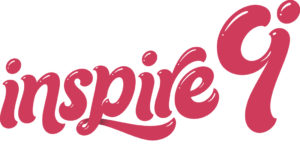At our September evening, we had 5(!) folks talk about using chatbots and voice activated products within your product.
Keith Swann began the evening with a bit of background on chatbots. Keith is a Lead Consultant at Elabor8 and while he was at Sensis / Yellow Pages he was able to work on bots. Daniel Galindo, the lead ontologist at Sensis, joined him in the presentation to share with us some of the experiments they had tried with working with natural language requests.
Did you know the 1st chatbot was ‘born’ at MIT in 1966? Eliza was a psychologist you could chat with.
In 2005, IKEA introduced Anna which was another big leap for the use of chatbots.
Chatbots come in handy for sharing information with people. A good example is to collect information via chatbot while the customer human is awaiting the customer service human. This can decrease the amount of human time involved in the call. Sensis used API.AI and Python.AI for their business search in this manner.
Keith also talked about how chatbots can be easy to create – but it’s not easy to make it work correctly. It’s also not a set & forget product as you need to continue to manage user expectations. One of those expectations that’s the hardest to get right is the natural language of the chatbot. Getting this right is important as it impacts on people’s engagement with the service.
Biggest challenge of bots is language #prodanon
— product anonymous (@product_anon) September 28, 2017
Jen Leibhart & Stuart Hill from Australia Post talked about developing a chatbot as an experiment & how to approach giving your chatbot a personality.
The team used an internal hackathon as the opportunity to experiment. They wanted to drive awareness and traffic to a MVP product they were working on and the primary audience for the MVP were digital folks who used Slack on a regular basis so a Slackbot was a given.
At the beginning of the hackathon they had grand ideas of having both a Slackbot and a bot in Facebook Messenger. They wanted their bots to have great personality and do x,y AND z. That’s a lot of work for a 1.5 days so they kept functionality x and dropped y & z. 🙂
A few weeks after the hackathon they focused on the Slackbot, put in a little more effort and launched the bot across multiple slack workspaces. Six months after that hackathon, the Slackbot still has limited functionality but does indeed drive traffic.
The next experiment is to see how conversation increases that engagement. Stu was looking at how to build conversation with the bot. This includes thinking about both tone of voice and attitude. Just as you’d think about voice when building a brand or website, you need to translate that to the bot.
Stu thinks of it like one of those ‘choose your own adventure’ games. You need to think through the conversation a human will be having with a bot. To help give a bot more personality and be useful, Stu has been creating conversation maps to think thru the variety of answers the bot needs to provide. While it’s great fun to teach the bot to tell jokes, you need to make sure it always leads back to delivering value.
Advice from Jen & Stu if you’re creating a bot:
- As with any channel, will it reach your target market? Is your audience using FB or Slack or something else?
- Focus on 1 task that can be done well. You can expand beyond 1 after that’s working well.
- Use conversation maps to ensure the bot delivers the information required.
- Give it a go, learn & experiment!!!
Srinjoy De works at RACV in their New Products team. The team are currently working to bring intelligent tech solutions for the home. Previously he was at Catapult Sports, a leader in wearable athlete analytics for elite athletes.
Srinjoy talked about the possibilities of using voice technology to improve customer experience. Washing machines, fridges, cars and other machines are now loaded with Amazon’s Alexa. With Google Home recently launching in Australia, we’ll start seeing more and more voice products.
At RACV, they are running a trial using Google Home in some resorts. When you enter your room, there’s a Google Home which you can ask about the local weather or traffic or other holiday related queries. Using the device to play music is popular though in the future it could become a personal concierge (by controlling the lights or more). Since the device is so new to the market, we wondered what the adoption & onboarding was like during the pilot – Srinjoy said people adopt the technology quickly.
Thank you to Fiona Knight for volunteering on the night & helping to pull this blog post together!


